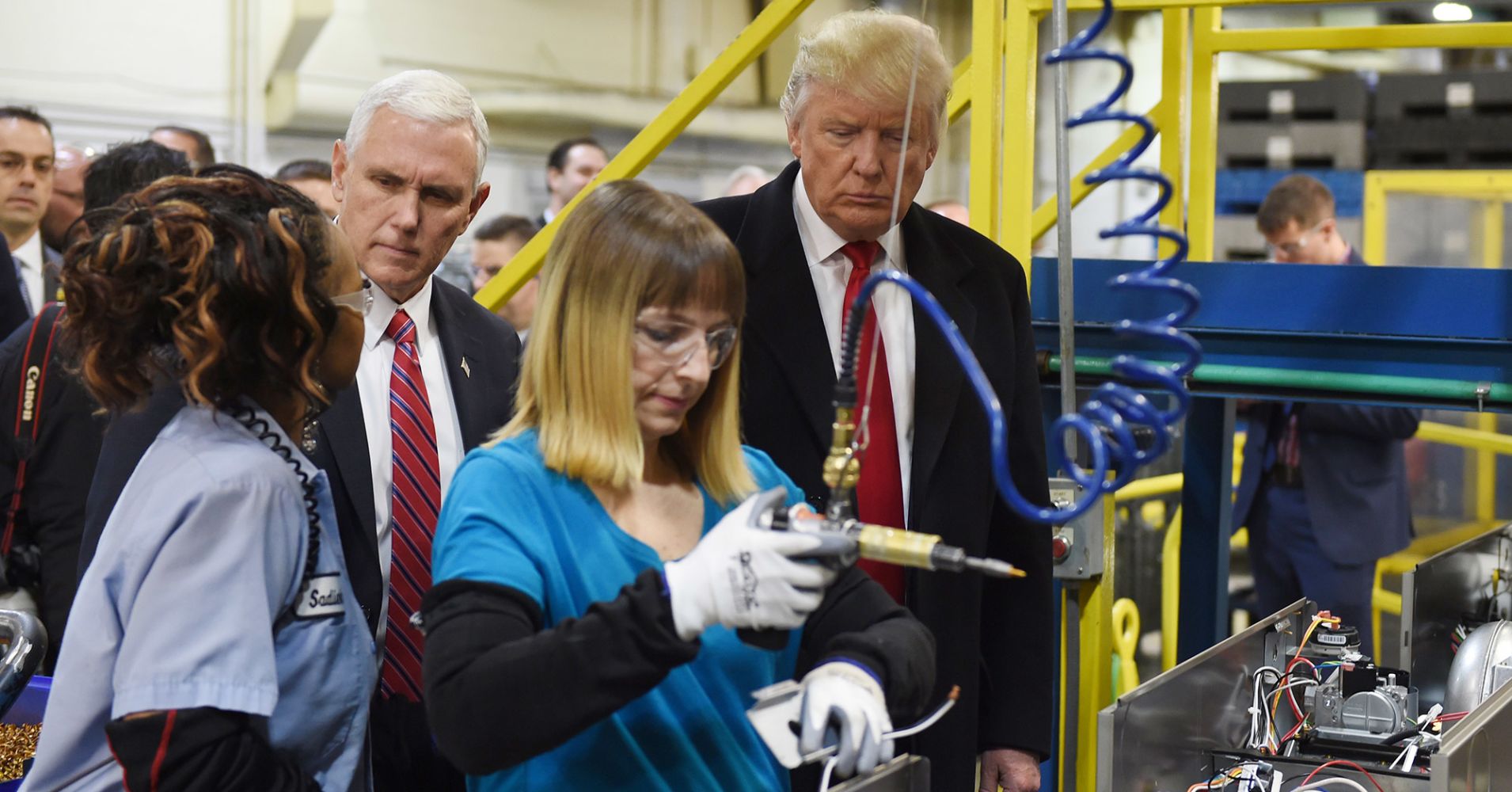The Trump administration’s widening trade war will raise prices for U.S. consumers, but it won’t bring back many manufacturing jobs that have moved overseas.
That’s what more than 800 companies said in a survey released Thursday by IHS Markit, a London-based economics research firm.
When the administration ramped up tariffs in July, President Donald Trump insisted the higher duties would encourage U.S. manufacturers to bring overseas jobs back home.
Instead, more than 4 in 10 companies surveyed said they plan to raise prices to offset the higher cost of production. Just 1 in 10 said they plan to reduce the share of total output produced outside the U.S. Roughly the same number said the tariffs would encourage them to move more jobs offshore.
Trump has touted occasional announcements of U.S. job creation as proof that his strategy is working. On Wednesday, he cited a steelmaker’s plan to create 600 new jobs.
(tweet)
But those gains would be dwarfed by news earlier in the week that General Motors planned to cut some 14,000 jobs in a widespread restructuring forced in part by fading sales growth. Though the company did not specifically cite Trump administration tariffs, U.S. automakers have been hit hard by the rise in steel prices brought by higher U.S. duties on imported steel.
Though many companies have tried to hold the line on price increases, the cost of higher tariffs will eventually be borne by consumers. One recent study estimated the economic impact of lost wages and higher prices at $2,400 per household in 2019.
Citing unfair trade practices, Trump imposed 10 percent tariffs on $200 billion of Chinese imports in September. China retaliated by imposing taxes on $60 billion worth of U.S. goods.
The U.S. duties are set to increase to 25 percent in January. Trump has also threatened to impose duties on $267 billion more of goods if Beijing does not meet his demands. That would expand U.S. tariffs to almost all of China’s exports to the U.S.
When Trump first sparked global trade tensions with major U.S. trading partners in July, U.S. businesses had hoped the disputes would be resolved quickly. But while the U.S., Canada and Mexico are set to sign an updated trade deal on Friday, negotiations with China have shown little progress.
Just days ahead of a meeting with Chinese President Xi Jinping in Argentina, Trump said Monday he expected to move ahead with raising tariffs on $200 billion in Chinese imports to 25 percent from the current 10 percent and repeated his threat to slap tariffs on all remaining imports from China.
Trump told The Wall Street Journal it was “highly unlikely” he would accept China’s request to hold off on the increase, which is due to take effect on Jan. 1.
“The only deal would be China has to open up their country to competition from the United States,” Trump told the Journal. “As far as other countries are concerned, that’s up to them.”
Trump, who is due to meet Xi at a G-20 summit in Buenos Aires this weekend, said that if negotiations were unsuccessful, he would also put tariffs on the rest of Chinese imports.
“If we don’t make a deal, then I’m going to put the $267 billion additional on,” at a tariff rate of either 10 percent or 25 percent, Trump told the Journal.
As Chinese tariffs take a bigger bite out of profits, U.S. manufacturers with operations there are scrambling to find alternatives. But few are moving those operations back home, according to a separate survey in October by the American Chamber of Commerce in South China.
Instead, more than 70 percent of U.S. firms operating in southern China are putting off further investment there and moving some or all of their manufacturing to other countries. Sixty-four percent of the more than 400 companies surveyed said they were considering relocating production lines to outside of China, but only 1 percent said they had any plans to establish manufacturing bases in North America.
Nearly half the companies surveyed also said there had been an increase in non-tariff barriers, including increased bureaucratic oversight and slower customs clearance. Analysts have warned of such a risk to U.S. firms as China is increasingly unable to match U.S. measures on a dollar-for-dollar basis.
Chinese manufacturers are also getting squeezed by the trade war. Profit growth among China’s industrial companies slowed for a sixth straight month in October as sales growth continued to slow.
Reuters contributed to this report.
WATCH:Twelve US execs explain how Trump’s trade war affects their bottom lines


 Signal2forex.com - Best Forex robots and signals
Signal2forex.com - Best Forex robots and signals




